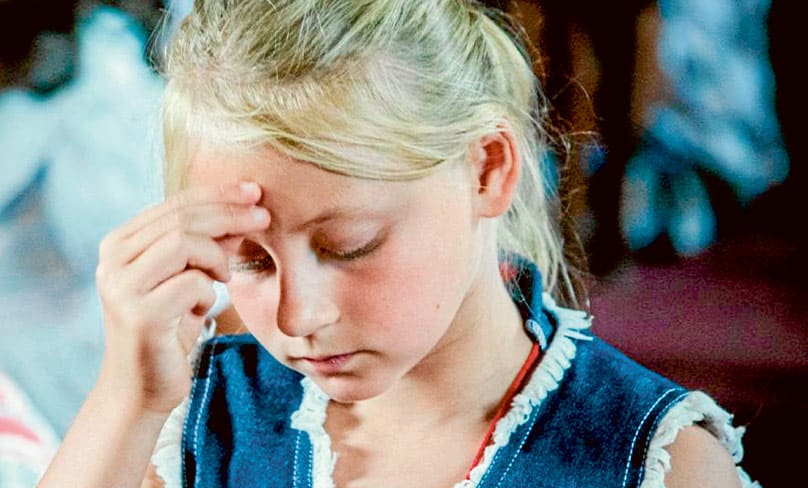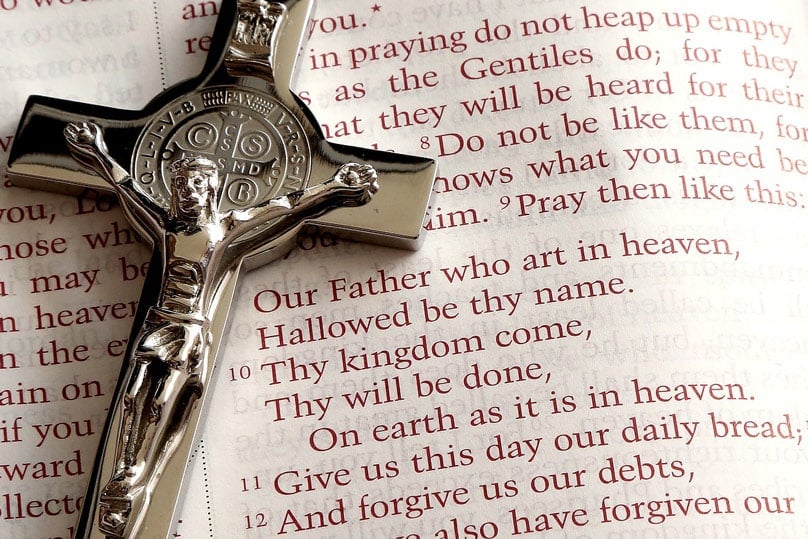
“A friend recently told me that in the Catholic school his son attends some teachers are now making the Sign of the Cross “In the name of the Father and of the Mother and of the Son and of the Holy Spirit.” I was astounded. Is this acceptable?”
When I read your question, I too was astounded. In total disbelief. Is this acceptable? Of course not.
We should remember where we got the Sign of the Cross in the first place. The answer, of course, is from Jesus Christ himself, when he sent the apostles out to baptise “in the name of the Father and of the Son and of the Holy Spirit” (Mt 28:19).
From the very beginning, the Church took up this formula and used it in the sacraments, in the Mass and in personal prayer. It forms part of the living Tradition of the Church.
For example, Tertullian, who died around the year 225, wrote: “In all our travels and movements, in coming in and going out, in putting on our shoes, at the bath, at the table, in lighting our candles, in lying down, in sitting down, whatever employment occupies us, we mark our foreheads with the sign of the cross.
These practices are not commanded by a formal law of scripture, but tradition teaches them, custom confirms them, and faith observes them” (De cor. Mil., 3).
In the Blessed Trinity, whom we name and honour with the Sign of the Cross, there are three divine persons, not four. There is no mother who would be a divine person.
Undoubtedly, those who have invented the new formula want to point out that the Father has motherly characteristics. Indeed he does.
The Catechism says: “God’s parental tenderness can also be expressed by the image of motherhood, which emphasises God’s immanence, the intimacy between Creator and creature” (CCC 239).
This is revealed in numerous passages of Scripture. In the prophecy of Isaiah God speaks to his people: “As one whom his mother comforts, so I will comfort you” (Is 66:13).
And again: “Can a woman forget her sucking child, that she should have no compassion on the son of her womb? Even these may forget, yet I will not forget you” (Is 49:15).
In the book of Psalms, the psalmist speaks of being comforted by God like a child by its mother: “But I have calmed and quieted my soul, like a child quieted at its mother’s breast; like a child that is quieted is my soul” (Ps 131:2).
So we can say without hesitation that God, whom we call Father, has both paternal and maternal characteristics. But these characteristics are in the one divine person whom we call Father. There is not another divine person who would be called Mother. We believe in the Blessed Trinity, not the Blessed Quaternity.
A good way to understand this is through the traditional triangle of the Blessed Trinity, with the names of the Father, Son and Holy Spirit at each angle.
Along the sides of the triangle are the words “is not”, so that the Father is not the Son, the Son is not the Holy Spirit and the Holy Spirit is not the Father.

In the middle of the triangle is the word “God”, connected to each of the angles with the word “is”. So the Father is God, the Son is God and the Holy Spirit is God.
There is no place in this diagram for a person called Mother, of whom it could be said that “The Father is not the Mother”, “The Mother is not the Son”, etc, and “The Mother is God”. There is no God the Mother.
While the Father has motherly characteristics, these characteristics do not constitute a person distinct from the Father, a person who would be God.
On the other hand, the Holy Spirit, who is the love between the Father and the Son, does constitute a separate person, distinct from the Father and the Son and yet God.
The Catechism of the Catholic Church sums it up: “Christians are baptised ‘in the name of the Father and of the Son and of the Holy Spirit’.
Before receiving the sacrament, they respond to a three-part question when asked to confess the Father, the Son and the Spirit: ‘I do. ‘The faith of all Christians rests on the Trinity’” (St Caesarius of Arles, Sermo 9, Exp. symb.; CCC 232).
In conclusion, we cannot change the words of the Sign of the Cross, which was revealed by the Son of God himself and which the Church has used from the earliest days. We would be tampering with the fundamentals of our Faith.
Related articles:
